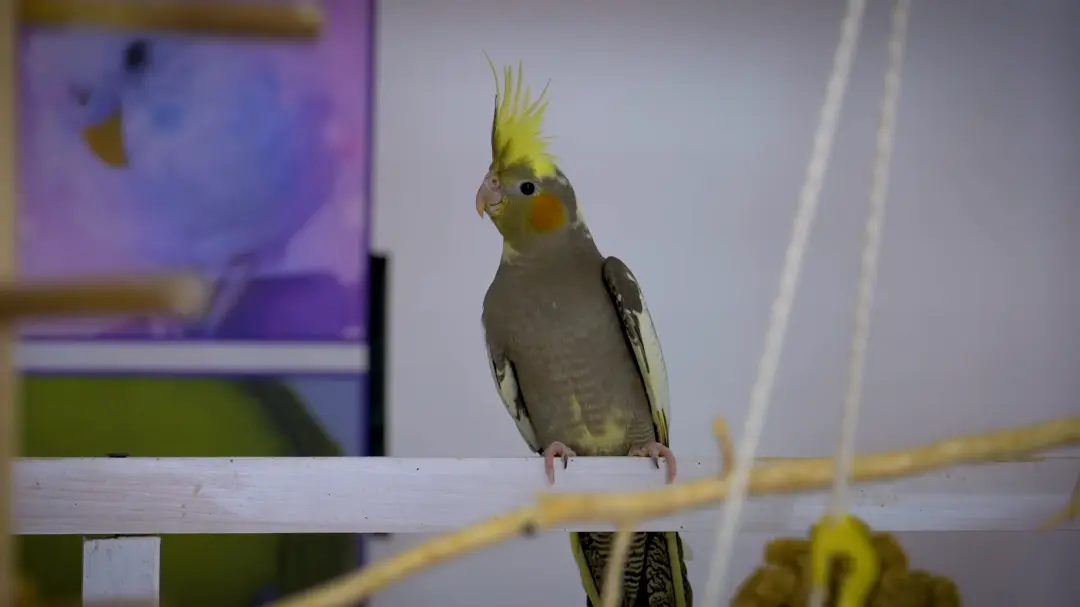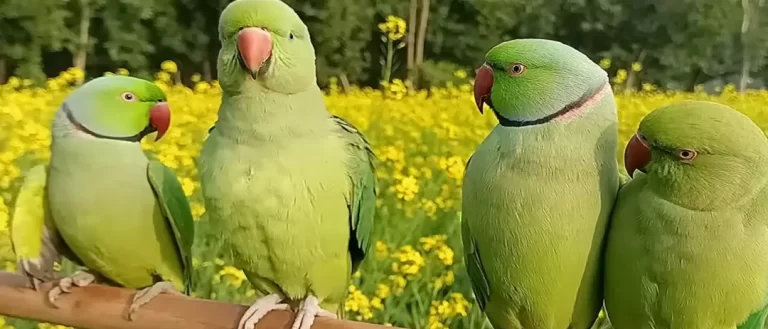Cockatiel
Cockatiel birds are one of the most popular birds throughout the whole world. These birds are native to Australia, they are also called Quarrion or Weero. They are known as the smallest members of Cockatoo family. Many people in different parts of the world keep these birds as their pets, these stunning birds can be convenient pets for any family.
These parrot birds are very creative and intelligent, you can teach them different types of tunes and whistles. They are social birds, and they love to interact with other pet birds and family members. They are very easy to handle because of their small size, you don’t need spacious space to keep them. Even a small cage is enough to keep 3 to 4 cockatiel birds at the same time.
General Information
- Origin: Australia
- Population: N/A (Not Quantified)
- Suitable Temperature: 18°C to 28°C
- Grooming Requirements: Medium
- 1st Sighting: 1700s
- Price Range: $60 to $600
- Scientific Name: Nymhicus Hollandicus
Characteristics Overview
- Body Size: Small
- Body Type: Slender
- Average Weight: 100g (3.52 Oz)
- Colors: 30+
- Wingspan: 30 cm
- Life Span in Wild: 10-15 Years
- Lifespan in Captivity: 20-25 Years
- Temperament: Adaptable, Friendly
Personality Overview
- Intelligence: High
- Vocalization: High
- Affectionate: Medium
- With Kids & Other Pets: Sociable
- Biting chances: Low
- Flying Skills: High
- Dependency Level: High
Origin:
These beautiful birds are native to Australia and available throughout the world now a days. As discussed earlier they are one of the most popular birds, you can get a cockatiel bird from any pet market in the world.
History:
They are known for their captivating and crest personalities. These birds were discovered in the 1700s, and they were classified in 1793 by Scottish naturalist Robert who gave a scientific name to the bird “Psittacus Hollandicus”.
After many years, Johann Georg Wagler who was an ornithologist in Germany, changed that bird’s name to Nymhicus Hollandicus. In the 1900s, these birds were brought to European countries and after that, they became popular and people recognized them as pets.
Nowadays, these birds are the first choice pets of the majority of families in different parts of the world. This is because, they are attractive, smaller sized, easy to handle, and many other things that make these birds a suitable pet for every family.
Appearance:
They are one of the most charming birds that are in look and personality as well. These birds size is small and that’s why keeping them as pets is not a big deal. The body of this beautiful bird is covered with gray feathers. These birds have yellowish feathers on their face, you can also see an orange circle feather on the back of the cockatiel eye, and they have a long tail.
Body Size
As we know, these birds are small, but here you will get information about both male and female cockatiel’s whole body size.
| Body Measures | Male Cockatiel | Female Cockatiel |
|---|---|---|
| Weight | 110g (3.88 Oz) | 100g (3.52 Oz) |
| Length | 14 inches (35.56 cm) | 12 inches (30.48 cm) |
| Wingspan | 11.81 inches (30 cm) | 11.02 inches (28 cm) |
Colors:
These birds can be found in different colors and variants. The charm of these birds is all in their colors. There are many astonishing colors of cockatiel birds, so you can get them in any of your favorite color such as silver, blue, gray, white-faced cockatiel, white and yellow. They are available in 30+ color verities but most common color is gray. If we talk about the rarest color, White-faced bird cannot be seen everywhere. Blue and silver colors are also rare. Some of their colors are described below with images.
Silver Cockatiel
Silver color in cockatiels is very rare to find. These silver birds have white markings on their tail feathers and also on the wings. They have orange or yellow cheeks and silver plumage.
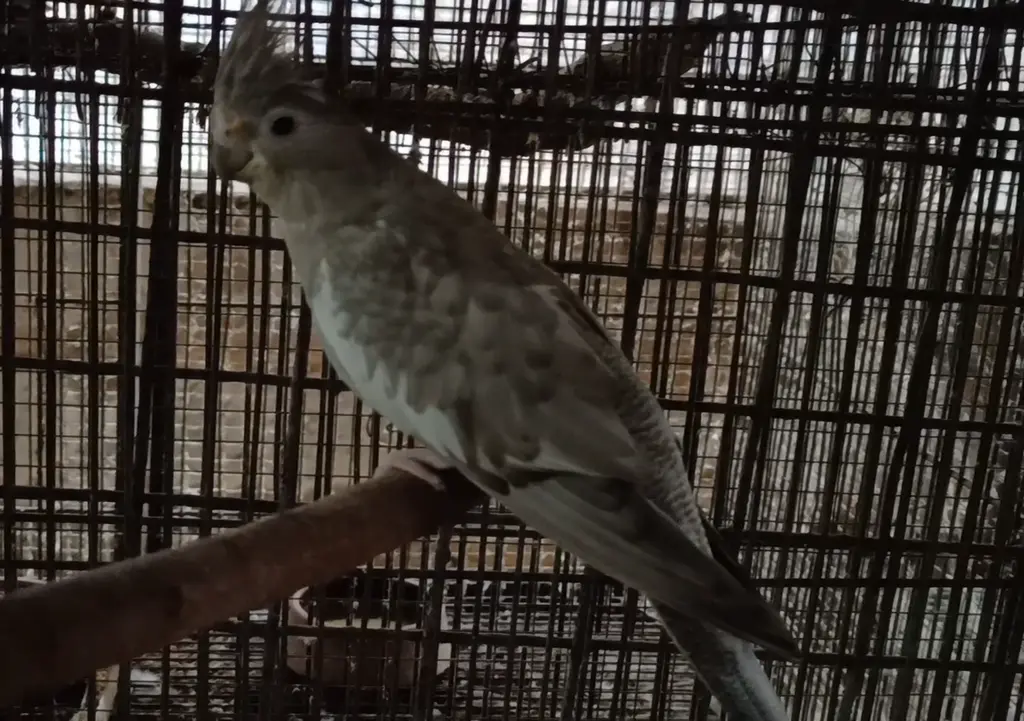
Blue Cockatiel
You might be surprised after hearing that blue cockatiel is not blue at all. They have only blue markings on their tail or some parts or body. These birds have white or yellow head, and they have an orange or yellow color on their cheeks like silver birds.
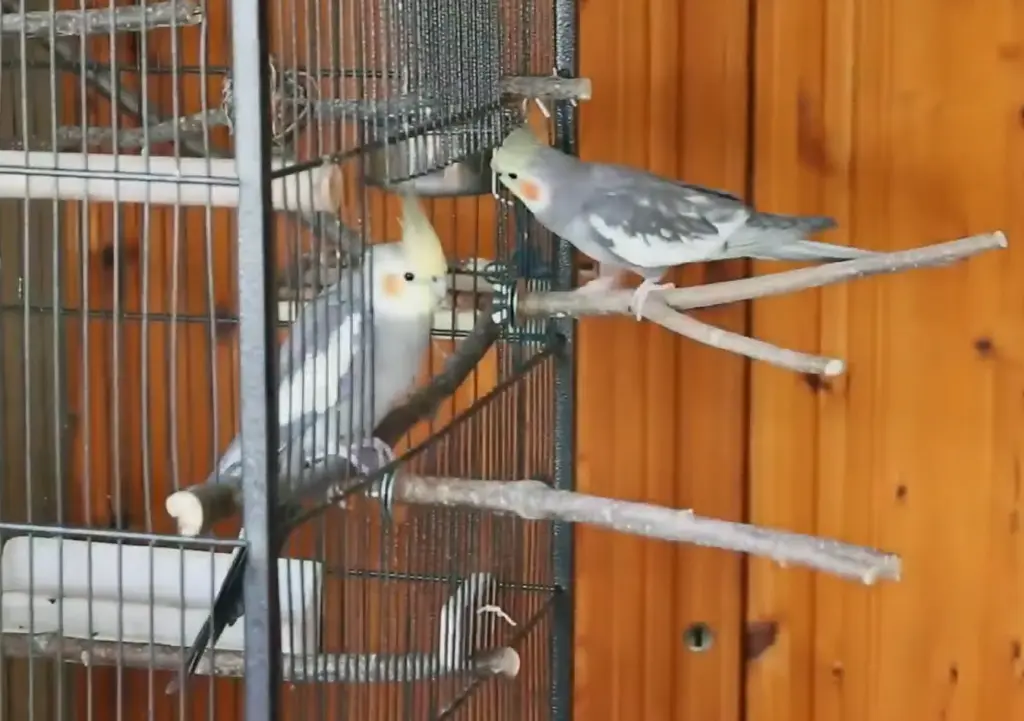
Gray cockatiel
Gray cockatiels have a gray body, and along with that their wings and tail have white markings. Like silver cockatiels, gray birds also have orange patches on their cheeks. It is their most common color.
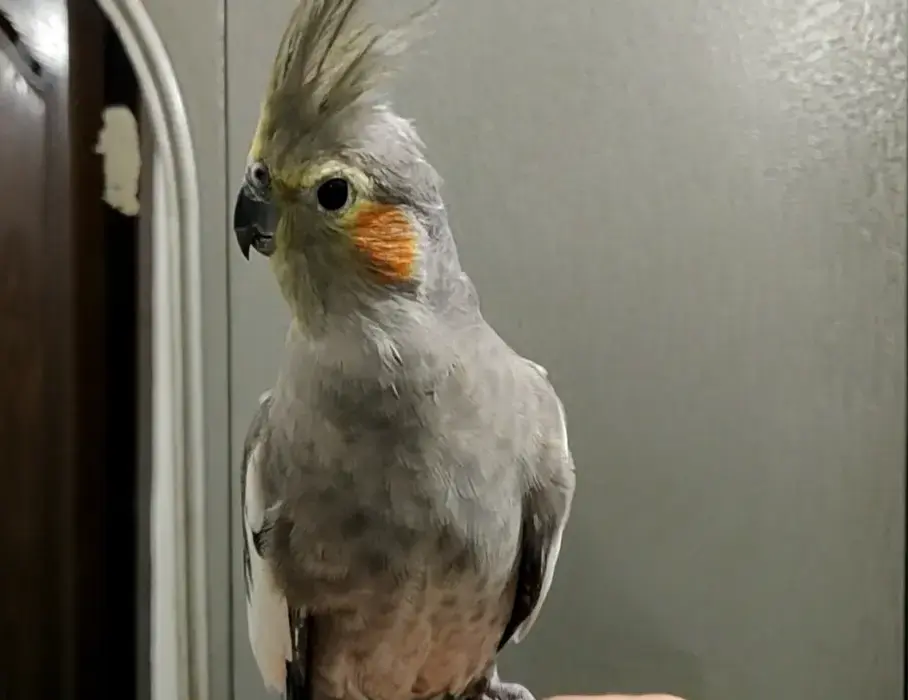
White-faced Cockatiel
White-faced birds have a grayish or white face. If we talk about female white-faced cockatiels, their overall face color is grey. They don’t have orange markings on their cheeks like other cockatiels.
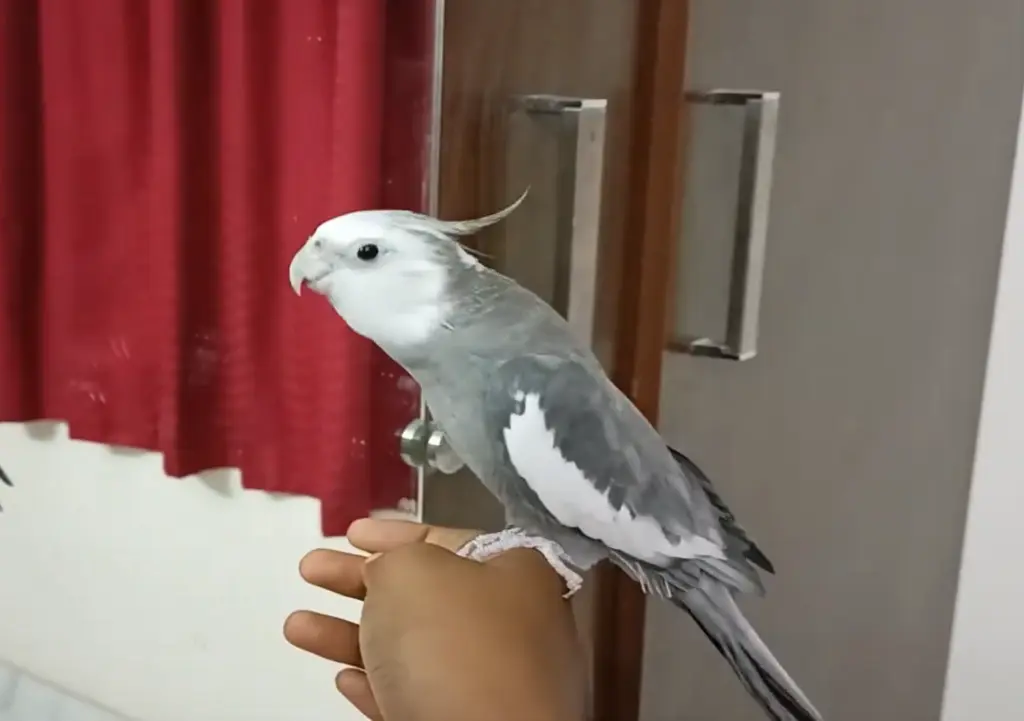
Yellow-faced Cockatiel
Yellow-faced cockatiels have yellow heads and their cheek patches are yellow and not orange as we see on other cockatiels. The body color of yellow-faced cockatiels is blue, gray and white.
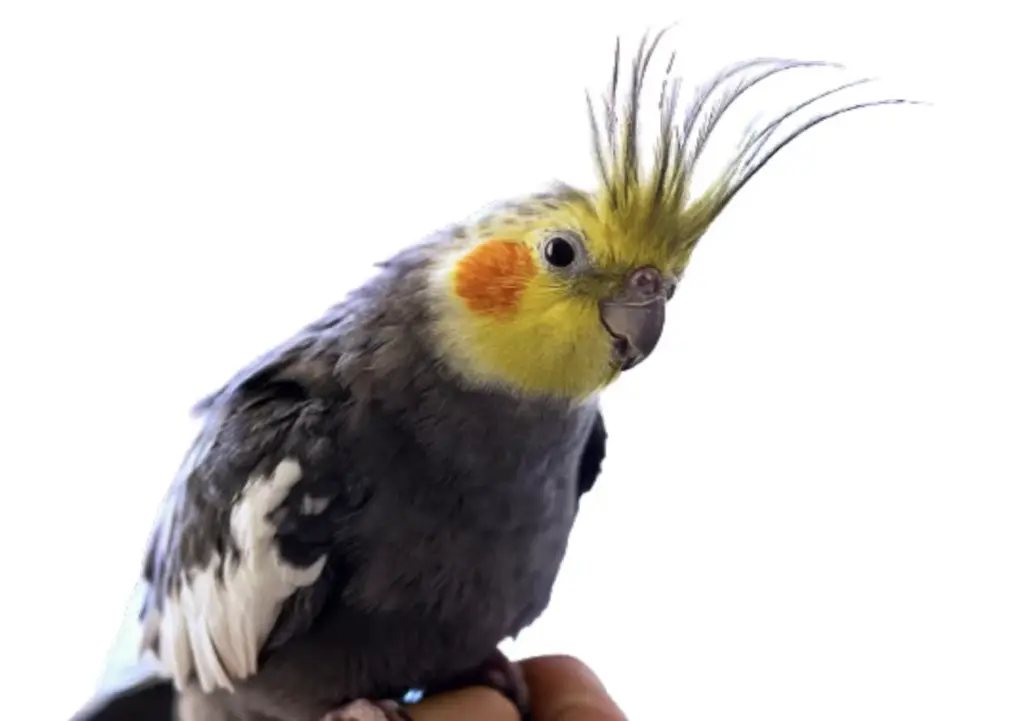
Albino Cockatiel:
Albino cockatiels are red eyed, pure white colored cockatiel. They look more attractive than other cockatiels.
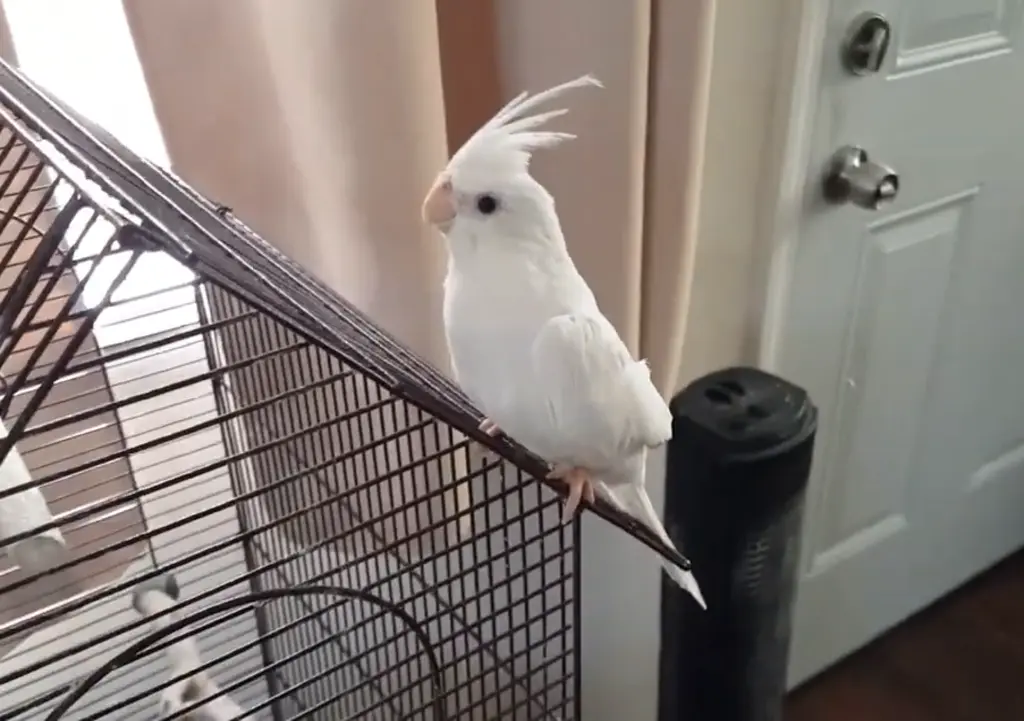
Care:
They are small birds and they are easy to handle as compare to peafowls, but still you need to give full attention to their care and grooming. Their cage should be spacious, so these birds can live easily. These birds might feel sad when they are alone, it would be better if you bring a big cage and keep 4 to 5 birds.
They are friendly and social pets by nature make sure to interact with them when you are free. They love to play and can mimic different voices if you train them well. There are some more easy steps that you have to take while taking care of these majestic birds.
Grooming
The grooming of these beautiful birds is to trim their nails. you need to trim your pet’s nails once in every month. Along with that, make sure to trim the wing feathers of your pet. Keeping your bird clean is also essential, you should give them a bath after a week or two, for this purpose you don’t have to do anything just provide a small dish to your birds in a cage, and they will clean themselves.
Quality Food
Nutritional and balanced diet is very important for them. Be sure to provide a good food diet and fresh water every day to your pet. Their diet should include fruits, vegetables, seeds, etc. Make sure to avoid foods such as chocolate, avocados, and fruit seeds.
Health Issues:
The common health disease that your bird can face is gastrointestinal infection. Apart from that, female birds can be affected by chronic egg-laying disease in which they might be unable to pass an egg. Some more health issues can be found in your pet such as giardia, fungal infection, and reproductive problems.
Giardia
When your bird is infected with giardia, it might have diarrhea, and you will also see that your bird attacking itself with their nails.
Fungal Infection
The symptoms of fungal infections in your pet are diarrhea, lethargy, and weight loss. If you see any of these issues in your that probably means your pet has a fungal infection.
Reproductive Problems
It is very common for your bird to get reproductive issues in which they have behavioral issues, excessive egg production, and failure to reproduce.
These health problems are not life-threatening for your pet birds but still, you need to contact your veterinarian when you find any symptoms in your bird regarding those health issues.
Lifespan:
Most Cockatiel birds are family pets, but we have seen they live in the wildlife as well. There might be a big difference in the lifespan of cockatiels in both captivity and wildlife. A 36 years old bird is reported as longest lived cockatiel in the world.
| Gender | Lifespan in Wildlife | Lifespan in Captivity |
|---|---|---|
| Male | 10 to 15 years | 20 to 25 years |
| Female | 10 to 15 years | 20 to 25 years |
Cockatiel in Wildlife
As we have shown in the table. these birds live less life in wildlife than captivity and this is because they face many wild animals and birds there, so every minute their life is in danger. Good diet and water are also not available to them in wildlife.
If these birds get injured or affected by any health problems in the wild, no one is there to rescue them. In that type of situation, many birds lose their lives even when they don’t reach their adult life. In every tough situation, these birds have to help their own by themselves.
As we know about the complications and dangers these stunning birds have to face, it might not be easy for them to live safely there. They would be lucky enough if they could spend 10 to 15 years in the wild.
Cockatiel in Captivity
Cockatiel birds get a good diet, fresh water, complete care, and grooming, so it is obvious that they can live more than wildlife. They have a better expectancy of life in captivity as compared to wildlife. They also get love from their owner and can play with other birds as well in captivity.
The lifespan of cockatiel birds in captivity can easily reach 25 to 30 years if they get complete care, a better diet, and a kind owner who keeps these birds like his own children. These all things matter a lot in enhancing the life period of cockatiel birds.
Pros and Cons:
Are you willing to keep these majestic birds as your pets? Before going to take this decision, make sure to read about the positive and negative points of cockatiel birds.
Pros
Cons
FAQs:
Conclusion:
After reading this article, we are now ready to pet a cockatiel. As we discussed that they are small birds, easy to handle and available in many beautiful colors, many people in Asia and other continents keep them as their pets. They can be trained and hand tamed. They sing beautifully and you will enjoy their presence at your home.

